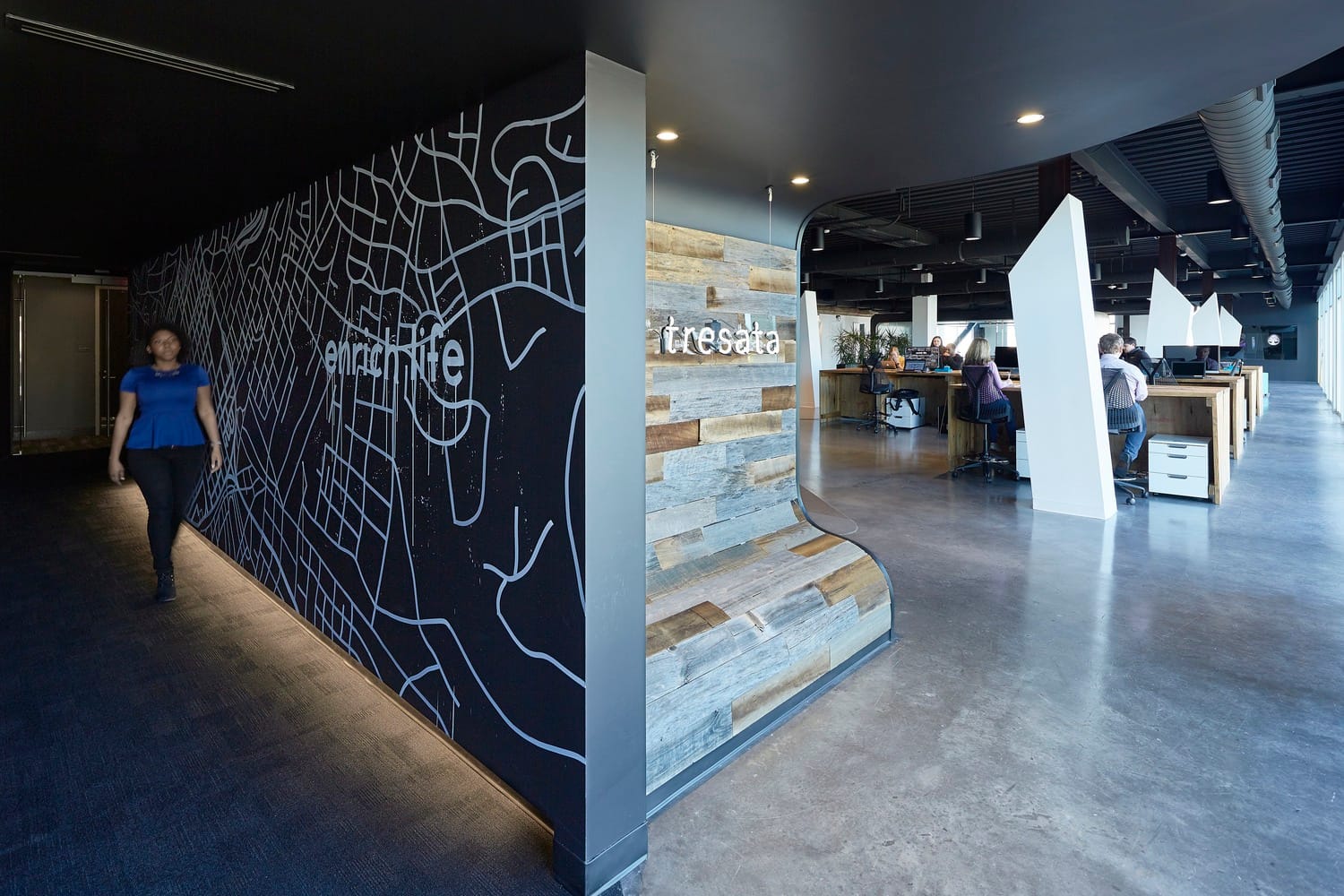More...
At IA, the Equation Adds Up to More Than the Sum of Its Parts.
Despite these days of being able to leverage highly advanced technology and data, interior design is still very much an art, not a science. Accordingly, the design of an interior or an environment – whether a workplace, a retail destination, or a restaurant – is not a formulaic enterprise. Each IA project is utterly unique, the byproduct of an inspired analysis and synthesis of existing site conditions; end users’ needs; client peculiarities, personalities, and preferences; and a myriad of other factors.
But at IA, design thinking is guided by a sort of conceptual equation we hold as a truism:
brand + culture + people = place
Meaning that all three ingredients—a client’s positioning, its corporate culture and values, and the aggregate character of those who work there—are carefully and equally weighed when designing a space. Indeed, those three components are as much the building blocks of a workplace as are the furnishings, the technological infrastructure, and the building envelope itself. As a corollary, “place” is more than just a physical design executed in color and materials and finishes. Rather, one experiences place as a combination of concrete and intangible elements.
At various stages of the design process, IA teams from our key areas of expertise conduct interviews, observations, and other such engagements to learn about the aforementioned factors:
- The IA Strategies team delves deeply into a client’s brand and culture—an involved process necessitating much research, observation, discussion, and asking the right questions to glean information far more granular than what is typically conveyed in corporate collateral. Focus groups, site visits, interactive activities, and even word association exercises are among the tools used to uncover a crystal-clear picture of corporate culture and positioning. “It’s a very comprehensive and multilayered means of understanding who the client is,” says Mary Lee Duff, IA principal and director of IA Strategies.
- The Experiential Graphic Design team is also heavily involved at the project’s visioning stage, and initiates its own set of queries and exercises to ascertain big-picture insight into a client’s brand, culture, and people—all ultimately to be expressed via features like wall graphics, site-specific artworks, interactive and digital displays, applications of branded color and materials, and additional sensorial gestures. A key focus of their investigation is to uncover what story lines the space should or could express. These potential narrative strands get bucketed into categories corresponding to the above equation; company history falls under “brand,” while employee volunteer initiatives fall under “people.” A branded environment should be calibrated based on how forcefully or explicitly the client wishes to convey its message. Some desire to display mission and value statements prominently; others prefer a more tailored, understated expression. “That might translate into softer-spoken elements like logos and motifs cut into wood, or etched into distraction film,” explains Julie Maggos, senior associate and director of Experiential Graphics. The EGD team also analyzes the “audience”—the varied user groups, both internal and public-facing—that the graphic program should communicate to: Should the space be geared strictly to employees, or will it also need to function as a showpiece to visitors, for instance? This exercise typically reveals audiences the client hadn’t initially considered. “For instance, the opportunity to give tours of their office to school groups—something they may not have done in their previous space,” says Maggos.
- Culture is leveraged as a powerful tool for recruitment, retention, brand building, and even wellness enhancing. At the same time, every company’s approach to and valuation of health and wellbeing varies. Accordingly, our designers and strategists drill down on a client’s cultural subtleties to determine what measures will be the most effective and impactful investment. One client may benefit from a yoga/meditation studio, while another may prefer to implement a robust plantscaping program.
- The Design Intelligence group innovates and exploits pioneering technology including virtual reality software to offer end users an immersive experience with their space prior to occupancy – ensuring stakeholders and staffers feel the design is an accurate self-reflection.
Sometimes a client’s brand and culture are quite clearly established; in other cases, those attributes are more challenging to discern. IA frequently works with companies in transition: rebranding, redefining, merging, perhaps purchasing a new subsidiary that needs to be integrated into the workplace. There may even be an influx of new hires, or a population turnover during this phase. The notion of change as a constant is at the root of IA’s thoughtful and probing approach to understanding and analyzing, through many lenses, a client’s unique culture and positioning—not only as it currently presents itself but also where the company might hope to take it.
In such cases, the goal is often a spatial design that’s both specific yet open-ended enough to support evolution. Design can encourage and enable cultural transition: an office renovation or relocation as an ideal opportunity to reinforce existing values and inspire certain desired new behaviors. “We’ve often witnessed a client’s culture shift dramatically on the very first day they move into their new space,” says Duff. When the environment is conceived with evolution in mind, changeability and interactivity will likely be important facets of the EGD program as well, giving clients the ability and flexibility to adjust graphic elements on an ongoing basis.
Every IA project exhibits a deft interplay of brand, culture, and people. Here are a few recent examples of how these three factors inform one another:
Like What You See?
Learn more about IA's approach to design! Click below to read "Design in 2018: Global Influencers of Today's Workplace."
At IA, the equation adds up to more than the sum of its parts.







